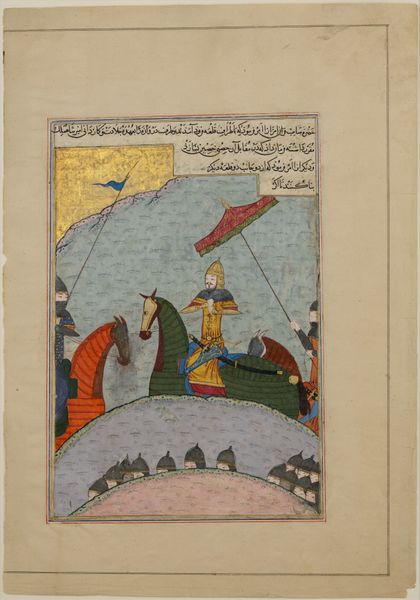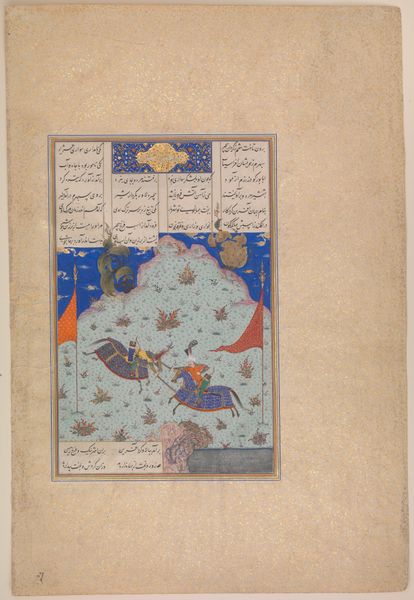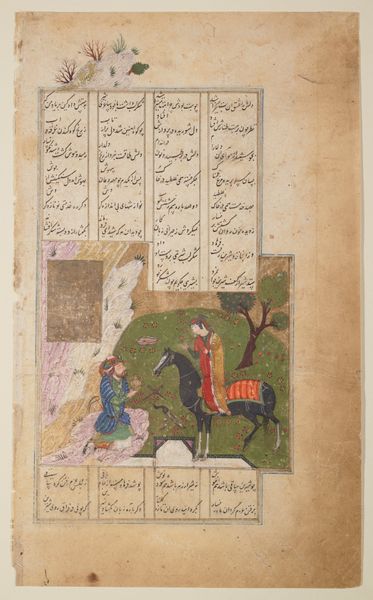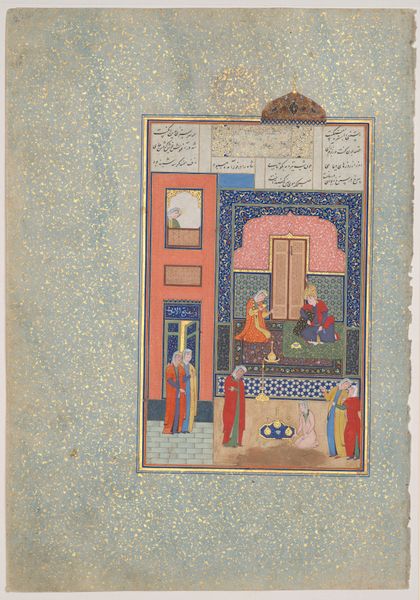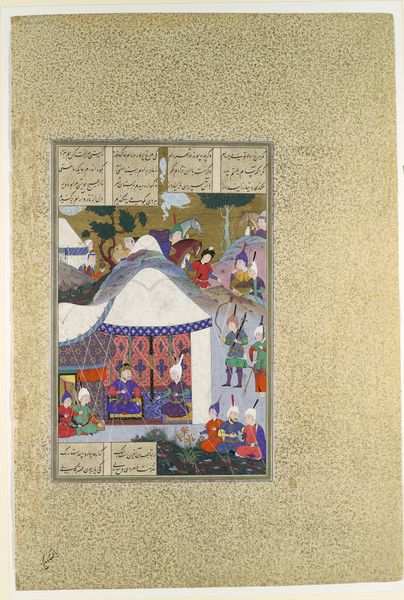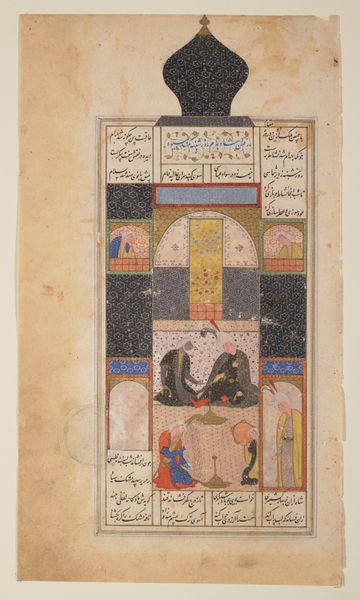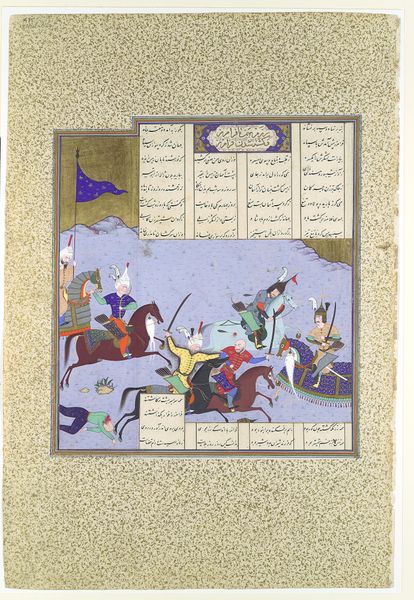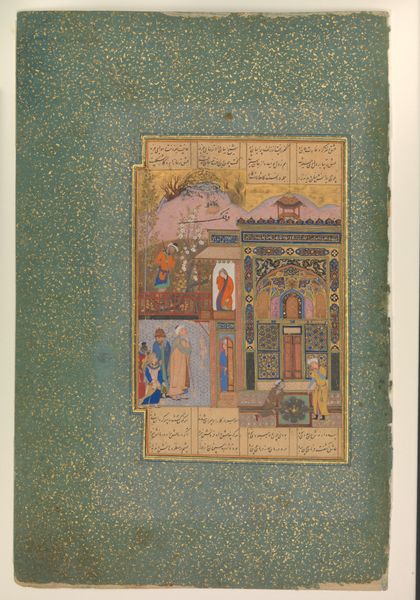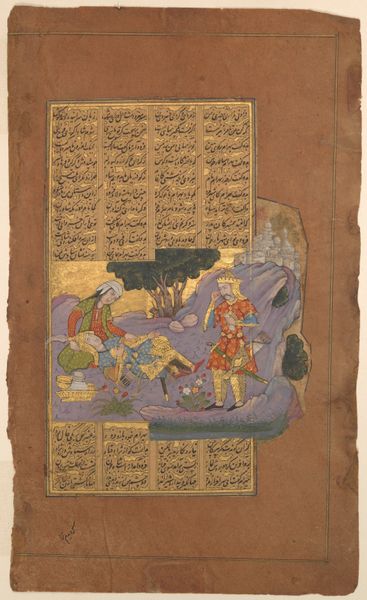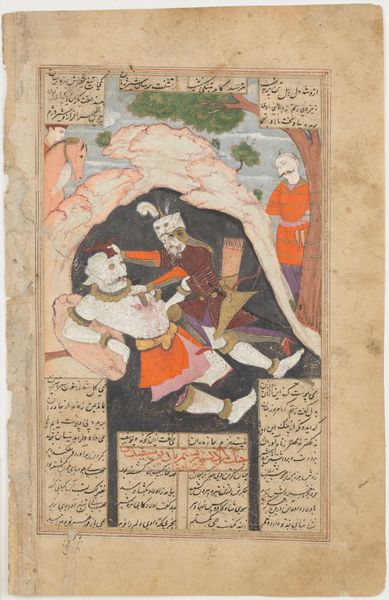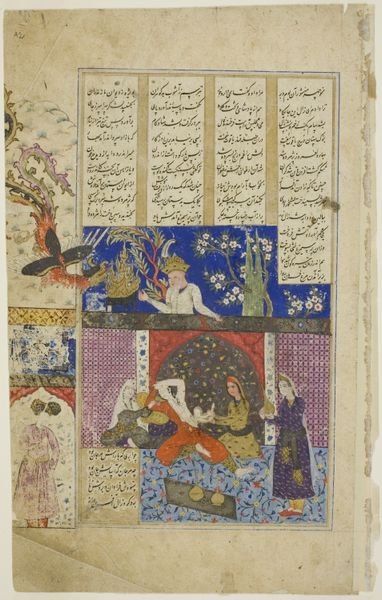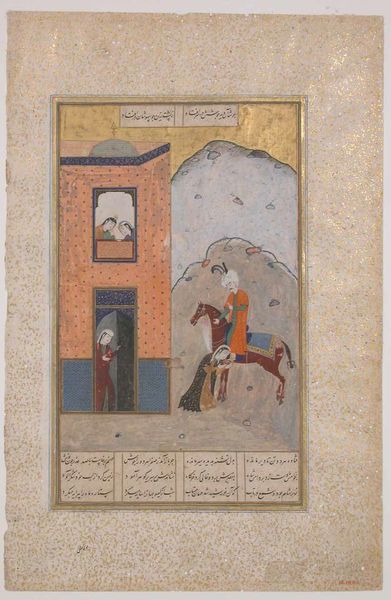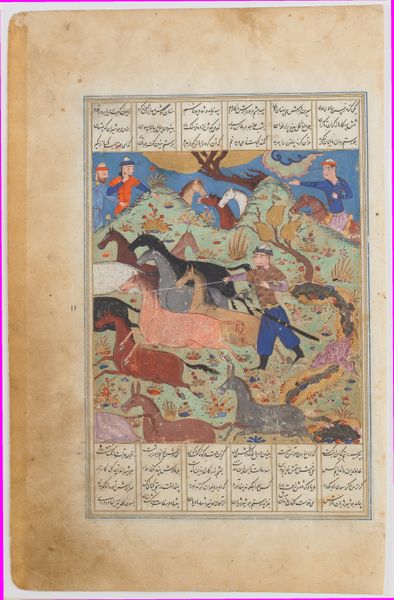
"Conquest of Baghdad by Timur", Folio from a Zafarnama (Book of Victory) 1410 - 1461
0:00
0:00
drawing, painting, paper, watercolor, ink
#
portrait
#
drawing
#
narrative-art
#
painting
#
landscape
#
figuration
#
paper
#
watercolor
#
ink
#
coloured pencil
#
horse
#
men
#
islamic-art
#
history-painting
#
miniature
Dimensions: H. 11 3/8 in. (28.9 cm) W. 8 in. (20.3cm)
Copyright: Public Domain
Editor: So, this is "Conquest of Baghdad by Timur," a folio from a Zafarnama, or Book of Victory, dating roughly from 1410 to 1461. It’s ink, watercolor, and gold on paper. It feels incredibly detailed but also strangely...abstracted. How do you interpret this work, particularly in light of its historical context? Curator: This miniature presents a fascinating glimpse into the confluence of power, representation, and historical narrative. Consider that this image served not merely as illustration, but as visual propaganda, reinforcing Timur’s authority and legitimizing his conquests. What is omitted, for example, is likely as important as what is shown. Editor: That's interesting. The level of stylization almost feels like it's distancing the viewer from the actual brutality of a conquest. Was this a common approach for depicting such events at the time? Curator: Precisely! This aesthetic distance serves a specific purpose. Instead of depicting the gritty realities of warfare, the artist presents a glorified vision. Think about the patrons who would have viewed this—members of the elite. They weren't necessarily interested in accurate reportage, but rather in celebrating their lineage and dominance. Consider how the landscape itself almost seems to be bowing before Timur. Editor: So, the landscape isn’t just background; it's another character in this carefully constructed drama. I’m also curious about the intended audience and the book’s role within that courtly setting. Curator: Indeed! These Zafarnamas were potent symbols of authority, reinforcing a particular version of history. Ask yourself, whose voices are amplified, and whose are silenced, within this image? How might this portrayal influence the reception of Timur’s legacy, both then and now? Editor: That’s a great question, and I think looking at it from that perspective reveals a lot about the politics of art. It’s not just a pretty picture. Thanks, that’s given me a lot to think about regarding its public role. Curator: My pleasure. Thinking about the public role of art lets us consider how it's connected with historical narratives, and in this context we see that legacy, shaped through strategic depictions, plays a significant role in a ruler’s legitimacy.
Comments
No comments
Be the first to comment and join the conversation on the ultimate creative platform.
